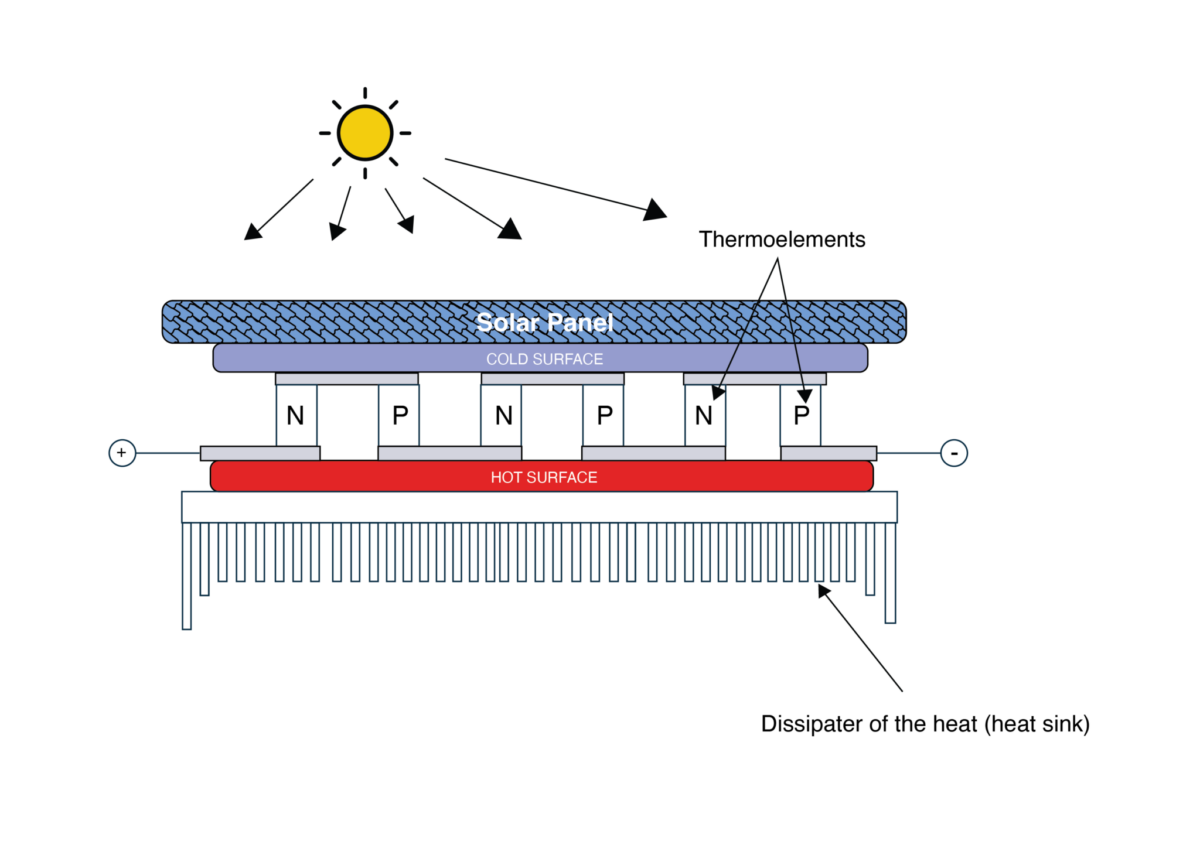PV systems integrated with thermoelectric cooling could achieve a payback time of just 6 years, according to scientists.
Scientists from South Africa have developed a novel photovoltaic (PV) system integrated with a thermoelectric cooling (TEC) device, aiming to enhance energy output and cost-effectiveness compared to traditional PV systems. The research, conducted at the Central University of Technology, found that their PV-TEC system could increase electricity production by approximately 9.2% compared to standard PV systems that lack cooling.

Thermoelectric coolers operate on the principle of the Seebeck effect, converting heat differentials into electricity. In this setup, the TEC is affixed to the reverse side of the PV panel, with a heatsink connected to dissipate heat effectively. The TEC is powered by the PV panel itself, actively cooling the panel and optimizing performance.
The study utilized numerical simulations based on meteorological data from Bloemfontein, South Africa, assessing performance under both summer and winter conditions. During winter simulations, the TEC remained inactive as the PV panel's temperature did not exceed 25°C. However, in summer conditions, the TEC engaged, maintaining the PV panel temperature below 25°C and boosting energy output significantly.
Economically, the researchers projected a 20-year lifespan for both standard PV panels and PV-TEC systems, factoring in annual electricity price increases and interest rates. They found that the PV-TEC system reached a break-even point in just 6.5 years, demonstrating its cost-effectiveness. Over the 20-year lifespan, the PV-TEC configuration was estimated to save 10.56% in project costs compared to conventional PV systems.
The study, detailed in the journal Solar Energy Materials and Solar Cells, underscores the potential of integrating innovative cooling technologies with PV systems to optimize energy production and economic viability. It highlights the role of technological innovation in advancing renewable energy solutions and addresses challenges related to enhancing efficiency and reducing operational costs in solar energy applications.
Moving forward, the researchers advocate for further development and optimization of PV-TEC systems, potentially expanding their application in diverse climates and enhancing their scalability for broader adoption. This research contributes to ongoing efforts to promote sustainable energy solutions globally, aligning with goals to mitigate climate change and transition towards cleaner energy sources.
Overall, the PV-TEC system represents a promising innovation in the field of solar energy, offering both technological advancements and economic benefits that could drive future developments in renewable energy infrastructure.
For more detailed insights, the original study can be accessed in Solar Energy Materials and Solar Cells under the title "Enhancing photovoltaic operation system efficiency and cost-effectiveness through optimal control of thermoelectric cooling"




Post a Comment